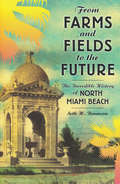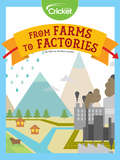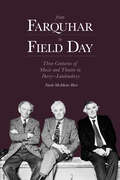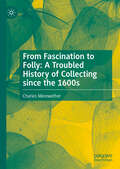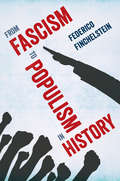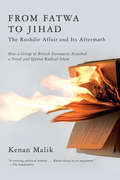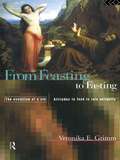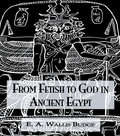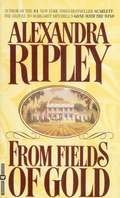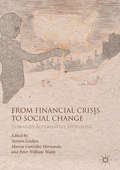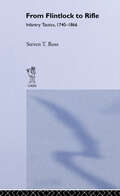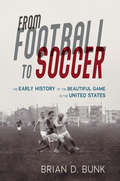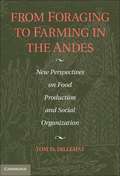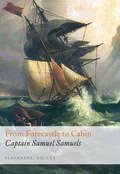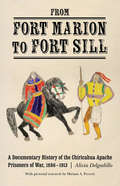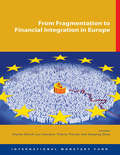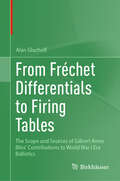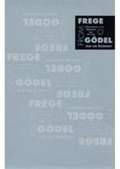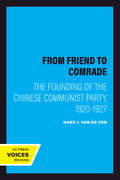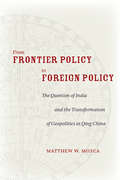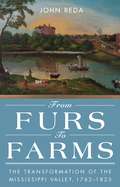- Table View
- List View
From Farms and Fields to the Future: The Incredible History of North Miami Beach
by Seth H. BramsonCaptain William Fulford first sailed into the Miami area from his duty in the Atlantic in 1881 and found an untamed wilderness of swamp marshes and mangroves awaiting his arrival. He never left. Amid the lowlands and flood plains, Fulford found his higher ground on the banks of the Oleta River and acquired 160 acres with a land patent through the Homestead Act. A few decades later, newspaper magnate Lafe Allen purchased the land and named it Fulford-by-the-Sea with plans to build a "perfect city, "? and the remarkable story of North Miami Beach was well underway. With the help of over two hundred rare and stunning photographs, local historian and lifelong Miamian Seth H. Bramson recalls the amazing story of North Miami Beach, from its humble and uncertain beginnings to the deeply rooted and forward-thinking community we see today.
From Farms to Factories
by Marcia Amidon LustedThe industrial revolution? Was that a war? No, it was a time of inventions, progress, and modernity!
From Farquhar to Field Day: Three Centuries of Music and Theatre in Derry~Londonderry
by Nuala McAllister HartDerry~Londonderry has a distinctive cultural history which reflects its unique position in the history of Ireland. This ground-breaking book examines three centuries of music and theatre in the city highlighting the key figures and turning points in its cultural life. It documents the rich diversity of drama and concerts played out in the city’s theatres and concert halls, from the birth of playwright George Farquhar in 1677 to performances by the Field Day Theatre Company and the cultural revival of the 1990s and beyond.
From Fascination to Folly: A Troubled History of Collecting since the 1600s
by Charles MerewetherThis book explores the interplay of Western European exploration and trade, with collecting, cabinets of curiosities and museums, and with the role of booty and plunder in the building of empires from ca.1600 until the end of the 19th century. The book focuses principally on the Dutch, English, Spanish, French and Italian at different times of their colonial power over the course of these 300 years. The achievements of exploration and trade provide the basis for these countries and both the state and individuals to build collections and museums. This involved governments to legitimize the pursuit of booty and subsequently looting whether by themselves, members of the ruling class or privateers. Throughout much of this period, there those who stood up and challenged such practices, passing laws to criminalize, curtail or contain these activities. By the late 18th century, these parallel but disparate activities converged. It was era of Napoleon and his imperial ambitions that drew these disparate activities together, with his support of intellectual inquiry alongside military plunder and collecting. This served as a symbol of imperial power of the French empire that, alongside England and Italy, exploited the wealth and riches of Egypt, India, and China.
From Fascism to Libertarian Communism: George Valois Against the Third Republic
by Allen DouglasGeorges Valois is the enigma who stands at the center of French fascism. Writer, publisher, economic and political organizer, Valois went from adolescent anarchism to fascism and finally to libertarian socialism. His career has mystified scholars, as it did his contemporaries.From Fascism to Libertarian Communism is the first study of Valois to take his entire life and work as its focus, explaining how certain basic assumptions and patterns of thought took form in strikingly different ideological options. Douglas's work, based on a thorough examination of sources from police archives to personal papers and interviews, provides a convincing explanation of this quixotic figure—a man who founded French fascism only to turn to the radical left and eventually die as a resister in Bergen-Belsen.At a time when radical socialism is in decline and neofascist movements are gaining renewed support—in France and elsewhere—this original interpretation of Georges Valois's life and thought could not be more timely.
From Fascism to Populism in History
by Federico FinchelsteinWhat is fascism and what is populism? What are their connections in history and theory, and how should we address their significant differences? What does it mean when pundits call Donald Trump a fascist, or label as populist politicians who span left and right such as Hugo Chávez, Juan Perón, Rodrigo Duterte, and Marine Le Pen? Federico Finchelstein, one of the leading scholars of fascist and populist ideologies, synthesizes their history in order to answer these questions and offer a thoughtful perspective on how we might apply the concepts today. While they belong to the same history and are often conflated, fascism and populism actually represent distinct political and historical trajectories. Drawing on an expansive history of transnational fascism and postwar populist movements, Finchelstein gives us insightful new ways to think about the state of democracy and political culture on a global scale.
From Fascism to Populism in History
by Federico FinchelsteinWhat is fascism and what is populism? What are their connections in history and theory, and how should we address their significant differences? What does it mean when pundits call Donald Trump a fascist, or label as populist politicians who span left and right such as Hugo Chávez, Juan Perón, Rodrigo Duterte, and Marine Le Pen? Federico Finchelstein, one of the leading scholars of fascist and populist ideologies, synthesizes their history in order to answer these questions and offer a thoughtful perspective on how we might apply the concepts today. While they belong to the same history and are often conflated, fascism and populism actually represent distinct political trajectories. Drawing on an expansive record of transnational fascism and postwar populist movements, Finchelstein gives us insightful new ways to think about the state of democracy and political culture on a global scale. This new edition includes an updated preface that brings the book up to date, midway through the Trump presidency and the election of Jair Bolsonaro in Brazil.
From Fatwa to Jihad
by Kenan MalikThe # 1 international bestseller A Finalist for the George Orwell Book Prize"It would be absurd to think that a book can cause riots," Salman Rushdie asserted just months before the publication of his novel The Satanic Verses. But that's exactly what eventually happened. In England, protests started just months after the book's publication, with Muslim protestors, mainly from immigrant backgrounds, coming by the thousands from the outer suburbs of London and from England's old industrial centers--places like Bradford, Bolton, and Macclesfield--to denounce Rushdie's novel as blasphemous and to burn it. In February of 1988, the protests spread to Pakistan, where riots broke out, killing five. That same month, Iran's Ayatollah Khomeini called for Rushdie's assassination, and for the killing of anyone involved with the book's publication. It was this frightening chain of events, Kenan Malik argues in his enlightened personal and political account of the period, that transformed the relationship between Islam and the West: From then on, Islam was a domestic issue for residents of Europe and the United States, a matter of terror and geopolitics that was no longer geographically constrained to the Middle East and South Asia. Malik investigates the communities from which the anti-Rushdie activists emerged, showing the subtleties of immigrant life in 1980s England. He depicts the growth of the anti-racist and Asian youth movements, and shows how young Britons went from supporting these progressive movements to embracing a conservative strain of Islam. Malik also controversially tackles England's peculiar strain of "multiculturalism," arguing that policymakers there failed to integrate Muslim immigrants, which many politicians saw as incompatible with their own "Western values." It was a perception that led many to appeal to Muslims not as citizens, but as people whose primary loyalty was to their faith and who could be engaged only by their "community leaders." It was a also policy that encouraged Muslims to view themselves as semi-detached citizens--and that inevitably played into the hands of radical Islamists. Twenty years later, the questions raised by the Rushdie affair--Islam's relationship to the West, the meaning of multiculturalism, the limits of tolerance in a liberal society--have become the defining issues of our time.
From Feasting To Fasting: The Evolution of a Sin
by Veronika GrimmIn this highly original study, Veronika Grimm discusses early Christian texts dealing with food, eating and fasting. Modern day eating disorders often equate food with sin and see fasting as an attempt to regain purity, an attitude which can also be observed in early Christian beliefs in the mortification of the flesh. Describing first the historical and social context of Judaism and the Graeco-Roman world, the author then proceeds to analyse Christian attitudes towards food. Descriptions of food found in the Pauline Epistles, the Acts of the Apostles, Tertullian or Augustine are compared to contemporary Jewish or Graeco-Roman pagan texts. Thus a particular Christian mode of fasting is elaborated which influences us to the present day; ascetic fasting for the suppression of the sexual urges of the body. Winner of the 1995 Routledge Ancient History Prize
From Fetish To God Ancient Egypt
by E.A. Wallis BudgeFirst published in 2005. Written by eminent Egyptologist, E.A. Wallis Budge, this work addresses Egyptian religion and mythology in all of its manifestations, from times when earth, sea air and shy were filled with hostile spirits and men lived in terror of the Evil Eye, to the moment when Egyptians hailed Amen-Ra as their one god. Topics include the predynastic cults, magic, gods (cosmic, stellar, borrowed and foreign), Memphite theology, judgement of the dead, and the underworld. Important hymns and legends, in English translation are included.
From Fields of Gold
by Alexandra RipleyReduced to destitution by the Civil War, Francesca ""Chess"" Standish struggles to win the love of her younger husband, whom she married in order to capitalize on her only remaining asset, a tobacco-machine patent.
From Financial Crisis to Social Change: Towards Alternative Horizons
by Torsten Geelan Marcos González Hernando Peter William WalshThis edited collection critically engages with a range of contemporary issues in the aftermath of the North Atlantic financial crisis that began in 2007. From challenging the erosion of academic authority to the myth that parliamentary democracy is not worth engaging with, it addresses three interrelated questions facing young people today: how to reclaim our universities, how to revitalise our democracy and how to recast politics in the 21st century. This book emphasises the crucial importance of generational experience as a wellspring for progressive social change. For it is the young generations who have come of age in a world marred by crises that are at the forefront of challenging the status quo. With insight into new social movements and protests in the UK, Canada, Greece and Ukraine, this stimulating collection of works will be invaluable for those teaching, studying and campaigning for alternatives. It will also be of relevance to scholars in social movement studies, the sociology and anthropology of economic life, the sociology of education, social and political theory, and political sociology.
From Financial Crisis to Stagnation
by Thomas I. PalleyThe US economy today is confronted with the prospect of extended stagnation. This book explores why. Thomas I. Palley argues that the Great Recession and destruction of shared prosperity is due to flawed economic policy over the past thirty years. One flaw was the growth model adopted after 1980 that relied on debt and asset price inflation to fuel growth instead of wages. A second flaw was the model of globalization that created an economic gash. Financial deregulation and the house price bubble kept the economy going by making ever more credit available. As the economy cannibalized itself by undercutting income distribution and accumulating debt, it needed larger speculative bubbles to grow. That process ended when the housing bubble burst. The book explains why the economy is now confronted with stagnation rather than the quick recovery predicted by other accounts.
From Flintlock to Rifle: Infantry Tactics, 1740-1866
by Steven T. RossThis is a comprehensive study of the major changes in infantry tacticts from the time of Frederick the Great to the beginning of what many see as the era of modern war, in the 1860s. Ross lays social and political change side by side with technical change. He argues that the French revolution, due to the fervour and loyalty it inspired in its participants, led to huge citizen armies of devolved command which were able to make use of new tactics that swept the poorly paid and poorly treated professional armies of their enemies from the field. Shortly after the Napoleonic wars other European countries experienced similar social change and by the middle of the Nineteenth Century these massive conscript armies were equipped with breech-loading rifles and more powerful artillery. The battlefield of the late 1860's had become a place where close infantry formations could not survive for long in the linear formations of the past.
From Football to Soccer: The Early History of the Beautiful Game in the United States (Sport and Society #1)
by Brian D. BunkRediscovering soccer's long history in the U.S. Across North America, native peoples and colonists alike played a variety of kicking games long before soccer's emergence in the late 1800s. Brian D. Bunk examines the development and social impact of these sports through the rise of professional soccer after World War I. As he shows, the various games called football gave women an outlet as athletes and encouraged men to form social bonds based on educational experience, occupation, ethnic identity, or military service. Football also followed young people to college as higher education expanded in the nineteenth century. University play, along with the arrival of immigrants from the British Isles, helped spark the creation of organized soccer in the United States—and the beautiful game's transformation into a truly international sport. A multilayered look at one game’s place in American life, From Football to Soccer refutes the notion of the U.S. as a land outside of football history.
From Foraging to Farming in the Andes: New Perspectives on Food Production and Social Organization
by Tom D. DillehayArcheologists have always considered the beginnings of Andean civilization from c. 13,000 to 6,000 years ago to be important in terms of the appearance of domesticated plants and animals, social differentiation, and a sedentary lifestyle, but there is more to this period than just these developments. During this period, the spread of crop production and other technologies, kinship-based labor projects, mound-building and population aggregation formed ever-changing conditions across the Andes. From Foraging to Farming in the Andes proposes a new and more complex model for understanding the transition from hunting and gathering to cultivation. It argues that such developments evolved regionally, were fluid and uneven, and were subject to reversal. This book develops these arguments from a large body of archaeological evidence, collected over 30 years in two valleys in northern Peru, and then places the valleys in the context of recent scholarship studying similar developments around the world.
From Forecastle to Cabin: Seafarers' Voices
by Samuel SamuelsThis is the autobiography of an American who ran away to sea at the age of 11 and charts his rise from the lowliest seaman (berthed under the forecastle) to the command of his own ship and the occupation of the luxurious after cabin. In the course of an action-packed career spanning half a century, he experienced almost all of the vicissitudes of life in the nineteenth-century merchant service: storm and shipwreck, famine and disease, press-gangs and desertion, piracy, violence and mutiny this last, at different times, as both mutineer and victim. Like many a sailor he was often in more danger ashore than afloat, but many of his adventures make excellent stories not least his romantic, but foolhardy rescue of a Christian woman from the harem in Constantinople. In this case the story did not quite follow the script, as she married his accomplice in the rescue. Samuels is best known for his later career, as captain of the packet ship Dreadnought, a ship built especially for him and under his direction. Known as The Wild Boat of the Atlantic in the 1850s this ship was reckoned the fastest vessel on the New YorkLiverpool service, and regularly beat even the steamers on this route. This success was largely down to Samuels hard-driving style as master, and much of the latter part of the book is taken up with the resulting crew troubles, culminating in a full-blown mutiny that he put down with characteristic forcefulness.
From Fort Marion to Fort Sill: A Documentary History of the Chiricahua Apache Prisoners of War, 1886-1913
by Alicia DelgadilloFrom 1886 to 1913, hundreds of Chiricahua Apache men, women, and children lived and died as prisoners of war in Florida, Alabama, and Oklahoma. Their names, faces, and lives have long been forgotten by history, and for nearly one hundred years these individuals have been nothing more than statistics in the history of the United States&’ tumultuous war against the Chiricahua Apache.Based on extensive archival research, From Fort Marion to Fort Sill offers long-overdue documentation of the lives and fate of many of these people. This outstanding reference work provides individual biographies for hundreds of the Chiricahua Apache prisoners of war, including those originally classified as POWs in 1886, infants who lived only a few days, children removed from families and sent to Indian boarding schools, and second-generation POWs who lived well into the twenty-first century. Their biographies are often poignant and revealing, and more than 60 previously unpublished photographs give a further glimpse of their humanity.This masterful documentary work, based on the unpublished research notes of former Fort Sill historian Gillett Griswold, at last brings to light the lives and experiences of hundreds of Chiricahua Apaches whose story has gone untold for too long.
From Fragmentation to Financial Integration in Europe
by Thierry Tressel Charles Enoch Jianping Zhou Luc EveraertA report from the International Monetary Fund.
From Frechet Differentials to Firing Tables: The Scope and Sources of Gilbert Ames Bliss' Contributions to World War I Era Ballistics
by Alan GluchoffThis monograph explores the history of the contribution to ballistics by the American mathematician Gilbert Ames Bliss during World War I. Drawing on the then-evolving calculus of variations, Bliss pioneered a novel technique for solving the problem of differential variations in ballistic trajectory. Called Bliss’ adjoint method, this technique was both hailed and criticized at the time: it was seen as both a triumphant application of pure mathematics to an applied problem and as a complex intrusion of higher mathematics into the jobs of military personnel not particularly interested in these matters. Although he received much praise immediately after the War, the details of Bliss’ work, its furthering of pure mathematical thought, and its absorption into mainstream ballistic work and instruction have never been adequately examined. Gluchoff explores the mathematics of Bliss’ work and the strands from which his technique was developed. He then documents the efforts to make the adjoint method accessible to military officers and the conflicts that emerged as a result both between mathematicians and officers and among mathematicians themselves. The eventual absorption of the adjoint method into range firing table construction is considered by looking at later technical books which incorporate it, and, finally, its influence on the ongoing development of functional calculus is detailed. From Frechet Differentials to Firing Tables will appeal to historians of mathematics, physics, engineering, and warfare, as well as current researchers, professors, and students in these areas.
From Frege to Godel: A Source Book in Mathematical Logic, 1879-1931
by Jean Van HeijenoortThe fundamental texts of the great classical period in modern logic, some of them never before available in English translation, are here gathered together for the first time. Modern logic, heralded by Leibniz, may be said to have been initiated by Boole, De Morgan, and Jevons, but it was the publication in 1879 of Gottlob Frege’s Begriffsschrift that opened a great epoch in the history of logic by presenting, in full-fledged form, the propositional calculus and quantification theory. <p><p> Frege’s book, translated in its entirety, begins the present volume. The emergence of two new fields, set theory and foundations of mathematics, on the borders of logic, mathematics, and philosophy, is depicted by the texts that follow. Peano and Dedekind illustrate the trend that led to Principia Mathematica. Burali-Forti, Cantor, Russell, Richard, and König mark the appearance of the modern paradoxes. Hilbert, Russell, and Zermelo show various ways of overcoming these paradoxes and initiate, respectively, proof theory, the theory of types, and axiomatic set theory. Skolem generalizes Löwenheim’s theorem, and he and Fraenkel amend Zermelo’s axiomatization of set theory, while von Neumann offers a somewhat different system. The controversy between Hubert and Brouwer during the twenties is presented in papers of theirs and in others by Weyl, Bernays, Ackermann, and Kolmogorov. The volume concludes with papers by Herbrand and by Gödel, including the latter’s famous incompleteness paper. <p> Of the forty-five contributions here collected all but five are presented in extenso. Those not originally written in English have been translated with exemplary care and exactness; the translators are themselves mathematical logicians as well as skilled interpreters of sometimes obscure texts. Each paper is introduced by a note that sets it in perspective, explains its importance, and points out difficulties in interpretation. Editorial comments and footnotes are interpolated where needed, and an extensive bibliography is included.
From Friend to Comrade: The Founding of the Chinese Communist Party, 1920-1927
by Hans J. van de VenScholars have long held that the Chinese Communist Party (CCP) was a centralized organization from its founding in 1921. In a departure from that view, From Friend to Comrade demonstrates how the CCP began as a group of study societies, only evolving into a mass Marxist-Leninist party by 1927.Hans J. van de Ven's study is based on party documents of the 1920s that have only recently become available, as well as the writings of a wide range of Chinese communists. He analyzes the party's difficulty in building a cohesive organization firmly rooted in Chinese society. While past scholarship has emphasized the influence of Soviet communism on the CCP, van de Ven stresses the thinking and actions of Chinese communists themselves, placing their struggle in the context of China's political history and highly complex society.
From Frontier Policy to Foreign Policy: The Question of India and the Transformation of Geopolitics in Qing China
by Matthew W. MoscaBetween the mid-eighteenth and mid-nineteenth centuries, Qing rulers, officials, and scholars fused diverse, fragmented perceptions of foreign territory into one integrated worldview. In the same period, a single "foreign" policy emerged as an alternative to the many localized "frontier" policies hitherto pursued on the coast, in Xinjiang, and in Tibet. By unraveling Chinese, Manchu, and British sources to reveal the information networks used by the Qing empire to gather intelligence about its emerging rival, British India, this book explores China's altered understanding of its place in a global context. Far from being hobbled by a Sinocentric worldview, Qing China's officials and scholars paid close attention to foreign affairs. To meet the growing British threat, they adapted institutional practices and geopolitical assumptions to coordinate a response across their maritime and inland borderlands. In time, the new and more active response to Western imperialism built on this foundation reshaped not only China's diplomacy but also the internal relationship between Beijing and its frontiers.
From Furs to Farms: The Transformation of the Mississippi Valley, 1762–1825
by John RedaThis original study tells the story of the Illinois Country, a collection of French villages that straddled the Mississippi River for nearly a century before it was divided by the treaties that ended the Seven Years' War in the early 1760s. Spain acquired the territory on the west side of the river and Great Britain the territory on the east. After the 1783 Treaty of Paris and the 1803 Louisiana Purchase, the entire region was controlled by the United States, and the white inhabitants were transformed from subjects to citizens. By 1825, Indian claims to the land that had become the states of Illinois and Missouri were nearly all extinguished, and most of the Indians had moved west. John Reda focuses on the people behind the Illinois Country's transformation from a society based on the fur trade between Europeans, Indians, and mixed-race (métis) peoples to one based on the commodification of land and the development of commercial agriculture. Many of these people were white and became active participants in the development of local, state, and federal governmental institutions. But many were Indian or métis people who lost both their lands and livelihoods, or black people who arrived—and remained—in bondage. In From Furs to Farms, Reda rewrites early national American history to include the specific people and places that make the period far more complex and compelling than what is depicted in the standard narrative. This fascinating work will interest historians, students, and general readers of US history and Midwestern studies.
From Fury to Freedom
by Lela Gilbert Raul A. RiesFrom Fury to Freedom is a positive book that will encourage many families to admit some of the most private, even intimate and depressing feelings they have had to endure. The realization that God is the ultimate answer for all their needs will help them to live through these devastating dark days. We cannot deny that our God is a God of miracles. He took Raul from the pits of hell, from the cocoon of despair, insecurity, fear, hate, and self-destruction, into the most wonderful healing—SALVATION; the healing of his soul and spirit. Raul is evidence of how God's grace can spare the life of a young boy and nurture him into manhood. Jesus cradled Raul's head in His bosom, and kissed away his pain. He gave him the direction and love for which he was desperately searching.
